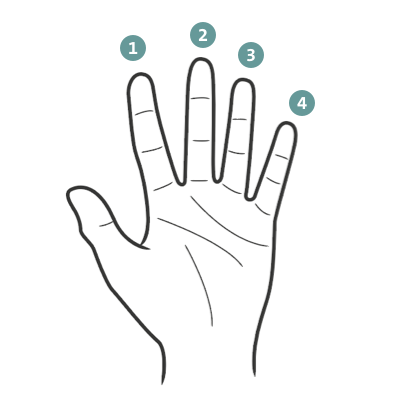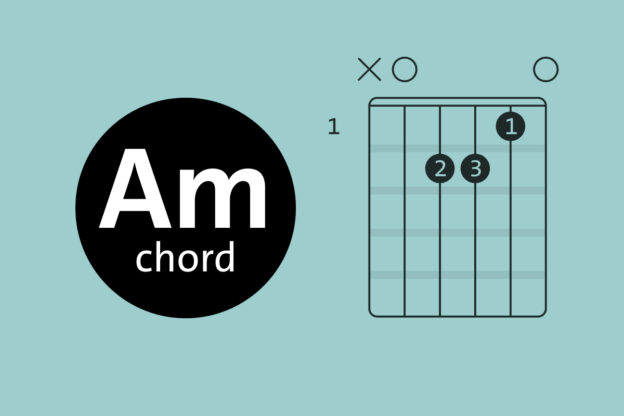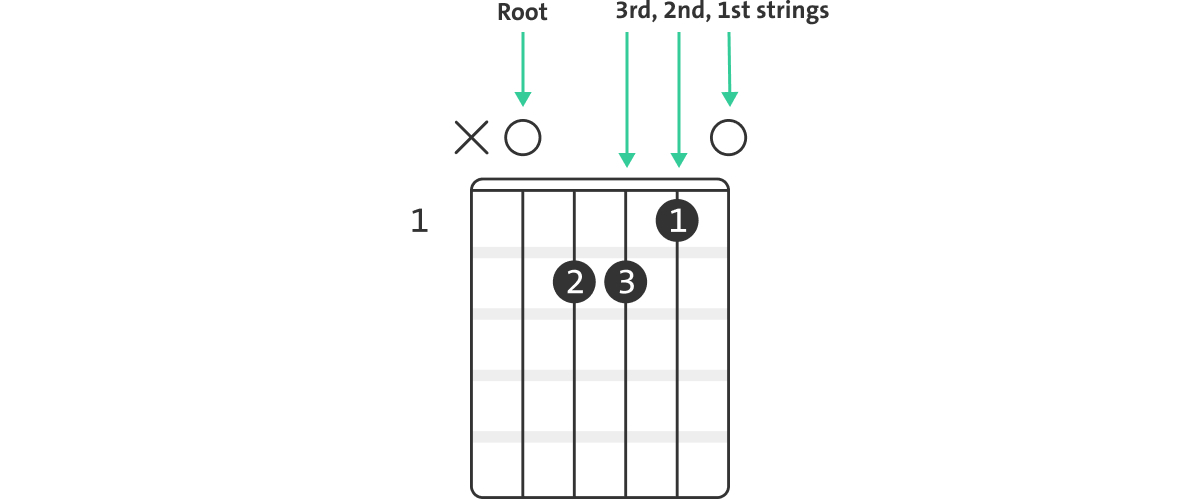Get ready to learn basic chords, the easy way. This week our focus will be on the classic A minor chord. Why is it a classic, you may ask? Read further, my dear rockstar – today is the day to get to know this chord.
Okay, eyes on the prize now. Let’s expand your arsenal of basic chords. We have already discussed the E chord and the Em chord in previous posts. Check them out if you haven’t yet – the E chord in particular can be a great help for this article. Today’s first prize is the Am chord. Do you know what the second prize is? Grab your guitar and tune it, that’s the second prize.
Estimated reading time: 6 minutes
In this article about the Am chord you’ll find:
Step 1 – Tune your guitar
As always, the first step is tuning your guitar. This goes for everyone playing an instrument, from beginner to pro. No one can get away with an out-of-tune guitar. For standard tuning you can use a tuner or an application for your phone like KARANG.
Step 2 – Observe the A minor diagram
To learn how to play a chord, you first need to know what it looks like. Chord diagrams are a common way of visualizing chords, helping you to find the chord on the guitar fretboard. Chord what?! Look at the illustration below.
The Am chord diagram shows you part of the neck of the guitar. The vertical lines from left to right are the low E, the A, the D, the G, the B and the high E (strings are counted from the bottom to the top, so the high E is the first string and the low E the sixth).
Does this shape look familiar? If you already know how to play an E chord we have great news for you – just move this shape one string towards your thinner strings and you’ll get the Am chord. So, the middle finger on the fifth string goes to the fourth string, the index finger on the third string goes to the second string, etc. If you don’t know the E chord yet, no problem, just read further.
On the diagram you can also see transparent circles at the top. These indicate the so-called open strings of the chord: the strings that you don’t have to press to play the chord. You also can see the symbol “X”, which indicates strings you don’t have to play. The number 1 indicates the first fret represented in the diagram. This is useful because it shows you exactly where to play the chord on the fretboard. In this case, the Am is played at the very top of the neck, at the first fret.
Step 3 – Get your fingers in the right position
The numbers in the thick black circles in the chord diagram indicate the fingering of the Am chord. Look at the illustration below and you’ll see that number 1 represents your index finger, 2 your middle finger, 3 your ring finger, and 4 your pinky. Easy, isn’t it? Good. Time to grab your guitar.

Get your fingers ready over the fourth, third and second strings. Place your middle finger on the second fret of the fourth string, your ring finger on the second fret of the third string and your index finger on the first fret of the second string, then press down. Strum all the strings, starting from the A string. This is the sound of Am.
Congratulations, you’ve added another chord to your palette!
Basic arpeggios and strumming patterns for the right hand
Now your fingers can find an Am chord on the guitar fretboard. Congratulations, you expanded your chord vocabulary with one new basic chord! You’re probably asking now: “That’s great, but which strings shall I play or strum for that chord with my right hand?” Important question! Even a properly placed chord can sound weird if we pluck or strum the wrong strings in the right hand.
Here are two examples for you to get started: Arpeggio (more appropriate for lyrical songs) and Strumming (for more dynamic songs) for the Am chord.
Arpeggio
An arpeggio is the technique of playing notes from a chord one after another. And we start with the root note of the chord, which is usually located on one of the bass strings.
The root note has the same letter as the chord name. For instance, both E and Em chords have the same root note – E, the sixth open string. Guess which root note we’ll have for the Am chord? Right, the A note. When you tune your guitar, you will hear that the 5th open string is A. So, playing an arpeggio we’ll start with the 5th open string and then we will play the 3rd, 2nd and 1st strings respectively.
We’ll play these four strings in sequence: 5th, 3rd, 2nd and 1st. We’ve prepared the note charts and tablature below – remember that the thickest string is indicated by the bottom line in the tablature.
We’ve also Chordified this video for you, so you can jam along and play an Am chord with us.
Strumming
Now it’s time to learn how to strum the Am chord. We should start with the root note and avoid playing muted strings. For the Am chord we have only one muted string – the 6th string. Remember the X symbol in the chord diagram? Therefore we will play five strings, starting with the 5th (A) string.
For this example, we’ll alternately play downstrokes and upstrokes – “downstroke” means from the 5th (thickest) string to the 1st (thinnest) string, and “upstroke” means the other way around. We indicate this with arrows facing up or down in the tablature below.Remember that the thickest string is indicated by the bottom line in the tablature. So “downstroke” is the arrow facing up and “upstroke” is the arrow facing down.
We’ve Chordified this video for you, so you can jam along and play an Am chord with us.
List of songs for practicing the Am chord
Bill Withers – Ain’t No Sunshine
Jamie Cullum – Don’t Stop The Music (Rihanna)
Maroon 5 – Girls Like You ft. Cardi B
Happy jamming!






